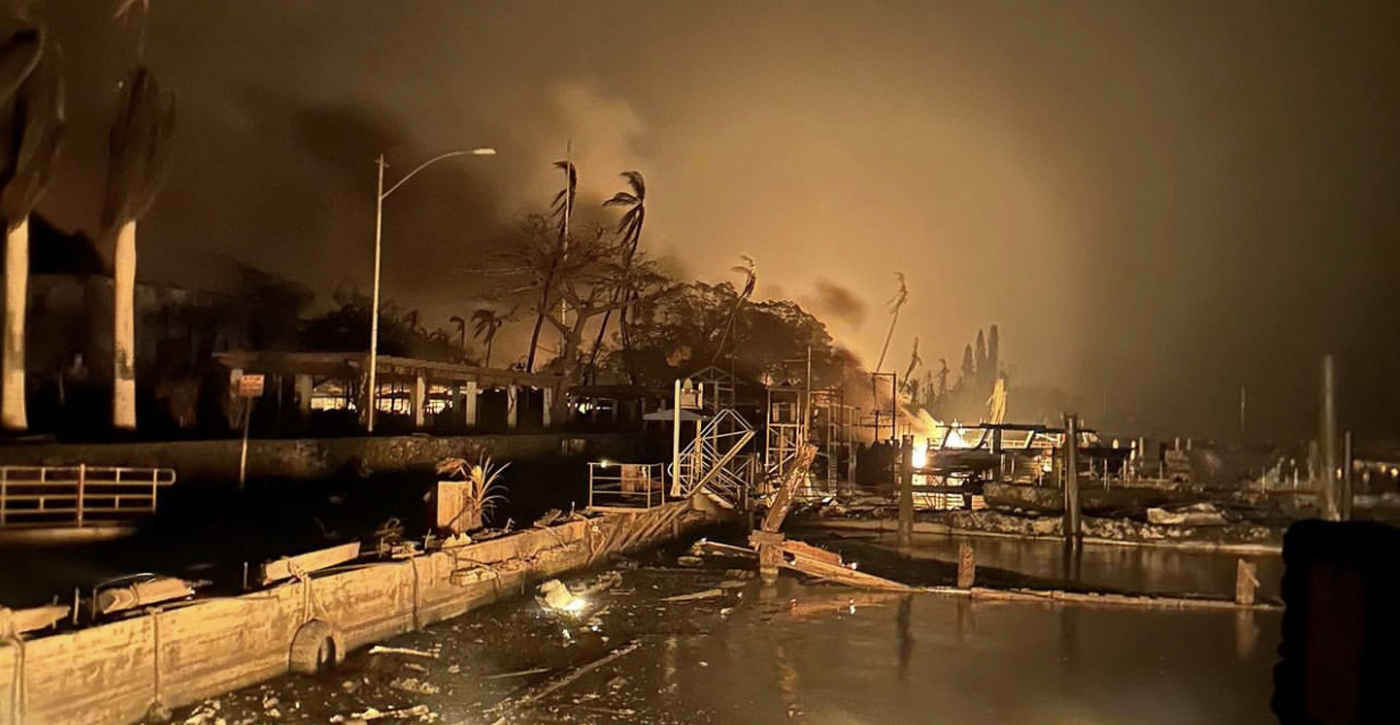Verne and Shirley Beechill, resident hosts of Honolulu (Hawaii) Meeting, drove up the dry coast of Oahu towards the community of Waianae, at the beach at the end of the road. They were looking for a community of homeless people struggling to defend their place on traditionally Hawaiian land. There they met a local woman who gave them a guided tour through a lovely, Zen-like, secret garden. The woman was delighted to learn of Verne and Shirley’s Quaker connections. "When we were struggling to reclaim this land from the military, American Friends Service Committee gave us what we asked for: porta-potties and a cellular phone. Everyone else who came up here tried to tell us what we needed, to impose what they thought was good for us, but AFSC was the only group who actually asked us what we wanted."
The same week that I heard Shirley’s story I had a surprising encounter at the end of a different road. Along with 30 others organized by a group called Na Wai o Wai’anae, I went on behalf of AFSC for an unprecedented hike and survey of ancient Hawaiian sites in the Lualualei Naval Weapons Magazine, a beautiful broad valley not far from where Verne and Shirley met their new friend. It had taken several years of active negotiations with successive commanders at the naval base to get permission for a group of civilians to visit this area. Our day began early with powerful, deeply resonating, traditional Hawaiian chants, thanking ancestors and asking their permission to enter the land. Then, under constant watch of two conscientious base security officers, we fanned out through deep brush under a dense canopy of mesquite and other vegetation.
We were a diverse group including Quakers, Buddhists, and traditional Hawaiians. The youngest was a baby of three months, the oldest around 80 years. There were several high school students and their Hawaiian Studies teachers, antimilitarism activists, attorneys, foresters, and environmentalists. It was probably the most ethnically diverse group I have ever been in, so much so that I lost track of skin color, eye shape, body type, and accent, and I gave up trying to guess or make assumptions about ancestral origin.
Throughout the morning we followed old streambeds looking for rock walls and other evidence of human habitation and agriculture prior to the military takeover of this valley. We were specifically searching for lo’i fields where traditional Hawaiians would have grown taro, from which to make poi, the staple of their diet. We found many walls and areas where the density of the vegetation seemed to indicate that the sparse rainfall is more efficiently trapped even today—clear hints of former habitation for later groups to revisit, explore, and map with precision and care.
Our afternoon in Lualualei began with another gift of Hawaiian chanting. Then we followed a pipeline the Navy had installed up an extremely steep slope, tapping water from a high spring that once supplied all the agricultural and domestic needs of the inhabitants of the valley below. Even today so much water flows through the pipeline that a six-inch overflow hose relieves the pressure and diverts water onto a section of land that the Navy does not use. The walls and ancient lo’i clearly document the presence of traditional Hawaiian communities in an area now controlled by the Navy for more than 80 years. The military control of 9,000 acres of Lualualei (ironically, the name means "lost") for nothing more than the storage of weapons in widely dispersed magazines demonstrates a colossal cultural, economic, and environmental injustice. I saw in this day’s journey the intersection of AFSC’s Hawaii program work on sovereignty, education, demilitarization, youth leadership, and economic justice.
There is hope. Thanks to much patient persistence on the part of local people, there is new dialogue between community activists and the Navy over access to Lualualei and the possibility of restoring land. The active involvement of young and old, rural and urban, Native Hawaiian and haole (white person) reflects the potential for bridging ethnic, cultural, and economic boundaries.
Teenagers and elders greeted one another and welcomed this haole from California with introductions and generous hugs. Hawaiian warmth and hospitality are legendary, and I have visited annually for over ten years now, but I have never witnessed such courtesy, friendliness, mutual support, and encouragement among friends and strangers as on this long day of strenuous hiking in the hot sun. From the evidence of these communities with whom AFSC works in partnership one can truly say that Quaker service is alive and well in Hawaii.


